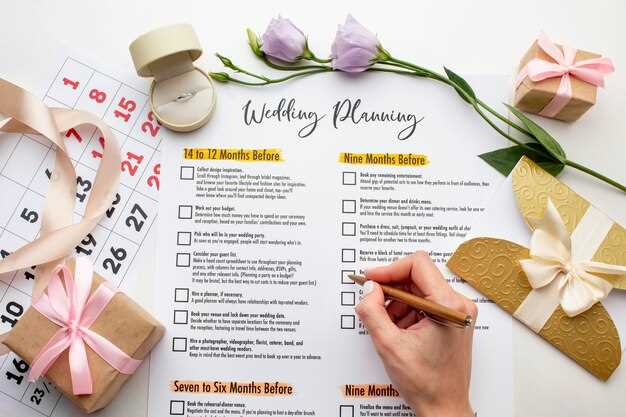Schedule a 90–120 minute session and work through a 13-item list laid out on a single page; the session includes a financial snapshot, debt strategy, account structure, parenting plans, religious alignment, career commitments, housing, legal documents, health issues, conflict management, estate details, social obligations and an exit protocol – record a one-line outcome and an owner for each item.
Create a shared spreadsheet with columns for assets, liabilities, monthly net income, retirement balances and student loans tied to university debt; set an emergency fund target of 3–6 months of combined expenses and a minimum savings rate of 10% of gross. If combined debt-to-income exceeds 40%, consider a staged repayment plan and keep separate accounts for discretionary spending for the first 12 months unless both partners agree to consolidation.
Define parenting expectations: clarify whether either partner is already a parent, desired timing for children, childcare budget, parental leave roles and backup care. Viele households record a proposed allocation (50/50, 60/40, etc.) and a contingency if one partner reduces hours; put numbers on paper and set 6- and 12-month review dates.
Plan regular communication rituals: schedule a weekly 15-minute check-in and one quarterly two-hour review to handle conflict style and gefühlsmäßig charged topics. Keep conversations factual – who will manage bills, who handles health appointments – and stay open about unmet needs so negotiations stay practical rather than reactive.
Map values and views on faith and traditions: frequency of worship, role of religion in childrearing, and household rituals. If one or both have strong religious practices, document required accommodations; unresolved differences here are a common reason marriages experience long-term strain, so be explicit rather than assume alignment.
Agree who is responsible for legal housekeeping: wills, powers of attorney, healthcare proxy, insurance beneficiary updates and whether a prenuptial agreement is needed. Include timelines for each document and whether student loans or university-funded obligations will be treated as individual or joint liabilities.
Turn the checklist into a living artifact: save revisions, set calendar reminders for annual reviews and add items as life braucht change. One idea is to assign follow-up owners and deadlines on the same page; clear records reduce friction and help many relationships stay functional and last long after major transitions.
13 Questions to Ask Before Getting Married – #6: What Was Your Childhood Like?
Open with a two-page timeline and share it aloud for 20–30 minutes. Put key events on pages, mark ages, schools, moves and when major family roles came into focus; this forces specifics instead of vague statements.
Include these data points: who raised you, where you lived, language spoken at home, major health events, dates of parental separation or remarriage, any runaway episode, and which adults set discipline. Record exact phrases parents used so you can compare how boundaries were modeled.
Use short prompts you can say aloud: “Tell me who kept the household schedule,” “Where did you feel safest,” “Have you ever runaway or wanted to,” “How were rules enforced,” “What would you change about the way you were raised?” Keep answers to two minutes each, then follow with one clarifying question.
Face disclosures about trauma, mental health diagnoses, or abuse directly: request names, ages, outcomes and medical or therapy information. Note long-term effects on attachment, trust, conflict style and health; a pattern of avoidance or hypervigilance is practical information for planning.
Compare differences that matter: cultural beliefs, religious practice, expectations around exclusivity and parenting. Discuss where youd prefer to raise children, what childcare classes or parenting classes each of you would take, and which compromise feels realistic for long-term plans.
Share financial memories: who managed bills, whether keeping separate accounts were modeled, and when scarcity shaped behavior. Most money arguments come from unspoken childhood rules about spending; list three rules you inherited and whether they were better or worse than you want to pass on.
When a partner withholds, invite openness: offer a private channel for additional information (email, document) and suggest reading a short memoir chapter or an article by an author you both trust so facts can be compared rather than assumed.
Set boundaries for disclosure: agree what to disclose to family, what remains private, and how to face sensitive topics in public. If one of you uses family slang or insults (note words like “scuka”), ask for context and emotional meaning before judging.
Document outcomes: a shared note listing three concrete changes each of you will make in response to this conversation (examples: enroll in couple classes, schedule therapist, limit weekend visits) and dates for a 3‑month check-in to review progress.
Question 6 – Childhood background that shapes partnership behavior
Recommendation: complete a three-step preparation check (individual timeline, joint review, therapist feedback) to map specific childhood patterns that would predict conflict, money habits or intimacy scripts.
-
Individual timeline (30–60 minutes each):
- Record ages for these events: parental separation, first serious dating, first sexual experience, major moves, guardianship changes.
- List concrete household rules you grew up with: who paid expenses, who disciplined, how affection was shown, and any religious sex teachings.
- Note exposure to substances, violence, or porn and the frequency; write one sentence about how each exposure shaped your expectations around sex and trust.
-
Joint review (60 minutes):
- Use three open prompts: “From my childhood I expect…”, “I react when…”, “I need when afraid.” Keep answers to one line each to avoid circular discussions.
- Highlight where models conflict: money (who would cover rent/expenses), discipline (how to handle anger), parenting style.
- Agree on two experiments to test new behavior for 30 days (e.g., split bills one way, delay a defensive reply for 24 hours).
-
When to bring in help:
- Schedule a session with a clinician if one partner reports trauma, compulsive porn use, or repeated inability to trust; you might consult local options (for example, smerling in Gainesville) or an online specialist.
- Therapist tasks: translate childhood data into practical scripts, set boundaries, and create a finance map to prevent hidden expectations.
Concrete prompts to use instead of vague questions:
- “Who paid the utilities and how were sudden expenses handled?” (reveals financial default)
- “How did your caregivers show apology?” (reveals repair patterns)
- “What did you learn about sex from early media or porn?” (reveals sexual templates)
- “When scared, would you seek comfort or withdraw?” (attachment indicator)
Scripts for hard discussions – read and then pause for one minute before answering:
- “I want to tell you one thing from my childhood that affects me now. Please listen without fixing.”
- “When I say I feel triggered, I need you to do X (name a specific action) for 48 hours.”
How to use answers: convert each reply into an action item (who will do what, timeline, metric). Example: if one partner says they expect the older sibling to pay bills, convert to “split utilities 50/50 starting next month” and review after three billing cycles.
Practical safeguards: document agreed decisions in a shared note so neither partner assumes past family norms will carry over. If youd find yourself repeating a parent’s pattern, pause and run the behavior through the timeline exercise.
Outcome: these discussions make it easy to identify whether a potential partner’s background aligns with your adult expectations, reduce surprise expenses and emotional escalation, and leave you better prepared for long-term relationship planning.
Who were your primary caregivers and what roles did they play?
Identify primary caregivers by name and relationship and record concrete data: ages when care began and ended, duration in years, one thing they handled daily (food, school drop-offs, medication), whether care was physical, emotional or financial, and any conditions attached to support.
List where care came from (mother, father, grandparent, foster parent, guardian) and note if arrangements were joint custody, institutional, or informal; document who did planning, who hauled groceries or paid bills, whether religious instruction was provided, and the reasons for each arrangement – include any nicknames that affected self-image, even unusual ones like scuka.
Use simple conversation prompts with your partner: what routines youd keep, what youd change, whether youre comfortable fulfilling the same roles, and either short-term or long-term supports youll need. Bring records or refer questions to experts (therapist, pediatrician, social worker) when facts are unclear.
Record measurable markers and red flags: were meals regular, were vaccinations up to date, were there stable housing and steady income, were caregivers employed, were there frequent moves, and were there serious mental health or substance issues. These datapoints predict how you both will grow and what stressors may resurface.
If details are missing, obtain school and medical records from offices where care occurred and be able to haul documentation to sessions; couples who compile timelines today reduce conflict later. Personally verify facts, agree on how to use them in planning, and decide which caregiver influences you must address together.
How did your family set rules, chores and expectations?
Set a written, time-bound chore matrix with three columns – safety/non-negotiable, shared tasks, and individual responsibilities – and review it quarterly with a 10–15 minute family meeting so you can evaluate adherence and reassign haul or split tasks when needed.
Make a brief list of who does each task (meals, laundry, trash, yard, pet care) and assign ages or skill-levels; research and practice show clear role definition reduces day-to-day disagreements and builds long-term planning skills. If a parent was absent or rules were informal in the past, note what’s been working and what failed so you avoid repeating patterns you’d rather not bring into a new household.
| Rule type | Typical ages/skill | Example tasks | How to enforce |
|---|---|---|---|
| Non-negotiable (safety, respect) | All ages | Boundaries about strangers, no physical aggression | Clear consequence ladder, immediate debrief |
| Shared household chores | 6+ for simple tasks; 12+ for complex | Dishwashing, haul of recycling, vacuuming | Rotate weekly; checklist with signatures |
| Individual expectations | Varies | Homework, personal room upkeep, classes or work | One-on-one check-ins; tie to privileges |
Use measurable criteria: “clean counters within 10 minutes after meals,” not vague commands. If you’re bringing children from a previous relationship, separate responsibilities by household unit for the first month, then merge lists into a combined rotation after you’ve tracked completion rates for two weeks.
Discuss boundary enforcement so everyone knows who will face consequences when rules are broken; have a neutral director (a parent or appointed adult) who logs incidents for review rather than escalating immediately. This reduces heated confrontations and helps people take feedback without shutting down.
In preparation for negotiations, have each partner write down three values (e.g., punctuality, cleanliness, privacy) and three chores they love doing versus three they avoid; exchange lists and craft a split that preserves quality of life and reduces resentment.
Evaluate early patterns: if chores were ‘done for you’ in your past home, you’ll need a transition plan to build skills rather than blame – set classes or short tutorials (how to cook a basic meal, laundry sorting) and schedule practice sessions. Practical training reduces frustration and is life-saving for household functioning.
When disagreements arise, follow a four-step protocol: pause, restate the other’s concern, propose one compromise, set a 48-hour trial. If the trial fails, bring in a third perspective (a counselor or trusted relative); researchers such as Larson and Wilcox have discussed how neutral mediation reduces entrenched conflict over roles.
Keep records: a single sheet with pages for each month, showing who did what; this creates objective data when you evaluate fairness after a decade of living together. If you’re merging different cultural expectations, be aware of how parent styles were modeled and where boundaries need recalibration.
Practical tools: shared calendar, chore app, visual chart for kids, and a 10-minute weekly review. Discuss financial planning tied to chores for older teens (allowance systems or shared bills) so responsibilities map to real-world skills.
For evidence-based guidance and templates, see CDC parenting resources that explain routines, discipline strategies, and positive reinforcement: https://www.cdc.gov/parents/children/index.html
How did caregivers respond when you were upset or scared?
Start by categorizing responses and recording frequency. Create a simple table listing instances from childhood: comforting (held, verbal reassurance), distraction (redirected to play), minimization (“stop crying”), punitive (scolded or punished), problem-solving (taught coping steps), absence (left alone). Note approximate age, who was present, and time spent soothing versus leaving; this inventory lets you evaluate patterns rather than rely on single memories.
Use the inventory to measure impact on adult behavior: attachment sciences link predictable comforting with lower physiological reactivity and better conflict resolution; repeated minimization or absence correlates with higher reactivity and avoidance. If more than 50% of recorded episodes fall into minimization/punitive/alone categories, you might notice difficulty sharing fear, heightened vigilance during disagreements, or a tendency to withdraw from people under stress.
When discussing childhood with a partner, try targeted prompts and a short experiment: pick three representative memories, state the memory, describe the feeling that was produced, and explain what you needed instead. Example script: “When I was X and caregiver Y did Z, I felt A; what would help me now is B.” Marie used this format to convert a charged argument into a calm discussion about boundaries. Some adults label a coping pattern scuka for shorthand during therapy; labels help clarify the role past responses play in current reactions.
Practical steps: spend 15–30 minutes weekly for four weeks sharing one memory each session, track partner responses (comfort, problem-solve, distract, minimize, leave you alone) and record percentages. If your partner comforts less than 30% of the time and minimizes or leaves you alone frequently, consider guided couples work or individual therapy to retrain responses. Agree on fallback strategies for acute moments (safe words, a planned time-out length, or a physical gesture that shows presence) and re-evaluate after three months. Note reasons for progress or stalls, and use that data to decide whether the partner’s typical responses can grow into reliable support or will remain a limiting factor for your career, parenting plans, or emotional safety.
What money habits or attitudes toward work did you pick up?
Open a twice‑monthly 30‑minute money meeting to compare income, bills and how work patterns affect household energy; that single habit reduces tension and produces better decisions.
- Concrete saving targets: emergency fund = 3–6 months fixed expenses; retirement contributions = 10–15% of gross; target a 20% immediate allocation of any raise toward long‑term savings. Be serious about hitting these numbers.
- Track behavior with a shared journal: log every discretionary purchase for 30 days, tag each entry as emotionally driven or planned; if emotionally driven purchases exceed 30% you need a coping plan.
- Agree on roles and affiliation of accounts: designate who pays utilities, who manages investments, and which expenses can be charged without prior discussion (set a dollar threshold). Rotate responsibilities yearly to avoid one person making all calls.
- Prepare for irregular income: if one partner is freelance or has union affiliation, increase the emergency fund by 1–2 months and keep a 6–12 month cash buffer for early career volatility.
- Use numbers for decisions: when evaluating job offers or a raise, calculate net income change, projected tax effect, childcare costs and commute; estimate how much a certification could raise take‑home pay within 12 months.
- Small behavioral rules that improve quality of life: no new subscriptions without a 7‑day review, a monthly “fun fund” capped at a fixed percent, and one monthly check‑in to discuss financial stress when someone feels emotionally drained.
- List three money habits you adopted from your family and the specific reasons they stuck.
- How does your current job affect household contribution? Name tasks you will play a bigger role in when work is intense.
- If you get a raise, what percent will you likely save, invest, or spend? Put exact percentages and stick to them.
- Can either person manage investments alone? If not, outline the preparation needed to share control or hire advice.
- Where do you stand on account affiliation: joint, separate, or mixed? Agree on thresholds for shared purchases without prior consent.
- How long could you cover core expenses if one income stops? Calculate months and the steps you’d take next.
Keep a short yearly review, use the journal entries as data, and revisit plans after major events; couples in places like gainesville or with different career paths (example: smerling, a teacher‑turned‑consultant) often find that explicit thought about raises, emotional spending and role division makes financial life more loving and far less likely to create destructive tension.
Were there moves, losses or conflicts that still influence you?
Start by cataloguing specific events: write dates, ages and sources (moved from york for university, military service, parental death, second long-term relationship breakdown) and rate how each continues to affect your mood or behavior on a 0–10 scale. That numerical rating makes it clear what you need to manage rather than rely on vague statements.
While discussing these questions before a major commitment, present the timeline to your partner and explain concrete triggers (anniversaries, smells, certain chores) and how they show up in daily life. Include examples: sleeplessness after a move, withdrawal after loss, avoidance of intimacy after past disagreements, or perfectionism learned while doing unpaid care or service roles.
Create a short plan for each high-impact item: what to do in the moment, who will step in, and how long a response lasts. For example: if a dispute about household chores escalates, agree that one person pauses and the other names one specific need; if grief resurfaces, schedule a 30-minute listening session rather than leaving it unresolved. These micro-protocols reduce escalation and help partners manage potential flashpoints.
Use at least three concrete tools: brief shared journaling to track patterns, a weekly 20-minute check-in to raise something that hurt during the week, and a therapist or coach for recurring themes. Keep differences in coping styles visible–write them down so you can negotiate role assignments (who handles bills, who arranges family service events) instead of assuming they’ll resolve themselves.
If you’re unsure whether an experience still shapes your responses, test it with a simple experiment: reenact a low-risk trigger via role play, observe physiological signs, and note whether feelings subside within minutes or persist for days. That data tells you whether to label the issue “manageable” or “requires professional work.”
Decide what “ready” means for both of you: a shared statement of when to raise old wounds, how to stop repeating patterns, and what resources you’ll use. When each partner can say aloud what a past move or loss means to them and how it might affect relationships, disagreements become negotiable rather than mysterious. This practical clarity reduces surprises and creates a plan you can follow while building your life together.
Which boundaries or supports do you need now because of that upbringing?
Set two concrete boundaries now: a weekly 30‑minute check-in and a separate “quiet hour” after 9pm; when tension rises, stop the conversation and take a 10‑minute break doing breathing exercises or stepping outside.
Assign who is doing food shopping and meal prep, share grocery lists, rotate tasks so ones with flexible schedules handle bulk cooking, and agree a spending floor to avoid surprise demands because money fights escalate quickly; also create a labeled shelf in the fridge to reduce daily friction.
forming written rules includes visit frequency, phone use with family, and topics you will not debate; put these conditions on a shared calendar and set a monthly review so small slights haven’t been left unaddressed.
according to wilcox at a university note, couples who share decision maps report fewer escalations; this idea adds clarity–create separate plans for money, schedules and downtime, and hold separate movie nights if tastes differ so values don’t clash at home.
One thing to implement immediately is a three-item checklist of practical questions: who manages X, when will others be included, and what do we really value; if you’ve been raised to avoid conflict and have been willing to change, try six sessions of targeted coaching – it can make relationships more predictable for partners looking to shift entrenched attitudes.


 13 Essential Questions to Ask Before Getting Married">
13 Essential Questions to Ask Before Getting Married">


 Principle 7 – Creating Shared Meaning — How to Build Team Alignment and Clear Communication">
Principle 7 – Creating Shared Meaning — How to Build Team Alignment and Clear Communication">
 When & How to Break Up with Someone You Love – Signs, Steps">
When & How to Break Up with Someone You Love – Signs, Steps">
 Sex Educator Debunks Desire Myths in Long-Term Relationships">
Sex Educator Debunks Desire Myths in Long-Term Relationships">
 Why Talking About Sex Can Be More Intimate Than Sex">
Why Talking About Sex Can Be More Intimate Than Sex">
 Blog Details – Optimize Titles, Meta & Content for SEO">
Blog Details – Optimize Titles, Meta & Content for SEO">
 Emotional Conflict and Relationships – Impact, Signs & Resolution">
Emotional Conflict and Relationships – Impact, Signs & Resolution">
 Why Follow His Marriage Timeline? Reasons & Next Steps">
Why Follow His Marriage Timeline? Reasons & Next Steps">
 Commitment Phobia – The Root Causes and the Way Out">
Commitment Phobia – The Root Causes and the Way Out">
 How to Be a Good Listener – Practical Tips & Signs You’re Doing It Right">
How to Be a Good Listener – Practical Tips & Signs You’re Doing It Right">
 Opposites Attract, Similarities Bind – Keys to Strong Relationships">
Opposites Attract, Similarities Bind – Keys to Strong Relationships">